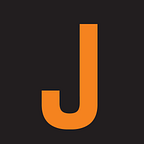How a user-centric approach to product design is helping transform Latin American newsrooms
12 newsrooms from Latin America joined the Newmark J-School and Meta Journalism Project’s first News Product Design Sprint
Over the summer, 12 newsrooms from Latin America joined the inaugural News Product Design Sprint, an intensive training where they learned the step-by-step process to develop user-informed and sustainable digital news products. The three-month program was a partnership between the Meta Journalism Project and the Craig Newmark Graduate School of Journalism at CUNY.
The program, which was conducted in Spanish, Portuguese and English, was led by Luciana Cardoso and Germán Frassa. Cardoso, who is from São Paulo, Brazil, worked in product at several Brazilian newspapers before becoming the product manager at Quartz. Frassa, who is originally from Argentina, also worked in product at newspapers in Latin America and Spain before becoming a consultant.
For both Cardoso and Frassa, the crucial goal of the program was to encourage product developers in newsrooms to focus on what users actually need. Often, says Cardoso, “we have something in our minds, and we believe that it’s something that the user needs. And that is not true.”
Learning to break away from the traditional newsroom decision-making structure can be difficult, but is necessary to develop an audience-centric approach.
“I think that the most difficult part is learning to think from the point of view of the user, which is easier said than done,” said Frassa, “because we are so focused on our brands, on our traditions.”
They pushed the participants to engage in ongoing, structured discussions with users so that they could adapt their products to better meet customer needs. Cardoso and Frassa also led by example, approaching the program itself from a product design perspective. After every coaching session and class, they encouraged cohort members to give feedback on the sprint and used that information to make changes as they went.
“I always asked them about the class before — how was the class, what can we do to improve?” said Cardoso. “As a product person, I really liked the feedback.”
Many of the participants arrived with a vague idea for improving a product like a website, but without a clean plan. Cardoso says they strove to offer a mix of product theory with practical, hands-on steps to building a prototype in three months.
The multilingual approach was new for the program organizers, as well as for its instructors. Sessions alternated between Spanish and Portuguese, with translations provided in real time time. Most deliverables were produced in English, and breakout room sessions were allowed in whatever language, or combination of languages, that participants preferred.
“It’s one thing to say that you can communicate in English and another thing that you are really able to understand the nuances of the concepts,” said Frassa. “And it’s much better when you are allowed to learn and discuss in your own native language.”
Both Cardoso and Frassa said they were impressed with products that used innovative approaches to challenge broader societal issues. Cardoso cited Agência Mural de Jornalismo das Periferias’s prototype, which will sell photographs of São Paulo’s neighborhoods in order to counter the negative stereotypes of the area. And Frassa highlighted Reportar Sin Miedo in Honduras, which as part of its focus of covering harassment, created a WhatsApp chatbot that allows users to publish harassment complaints.
Product development in Latin America is still in the “very, very early stages,” said Frassa. “It’s obvious that there is still a lot of work, especially at the organizational level. I think that in order to move ahead with these ideas, these organizations have to face the challenge of how to preserve what they’ve learned.”
